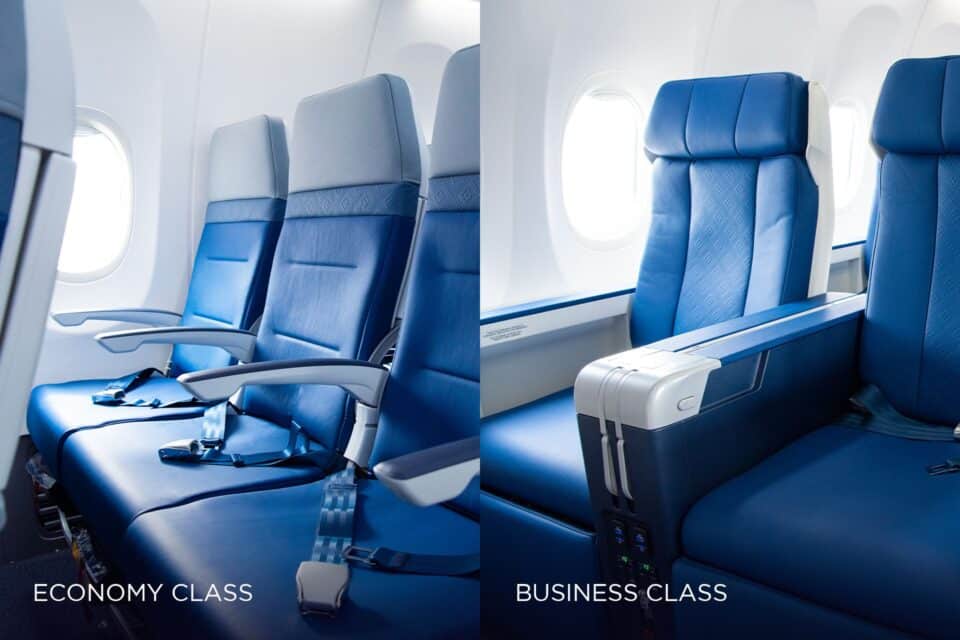Aerospace
Duckworth wants to change how airlines downsize seats.
Bravo: The FAA may impose strict guidelines for airlines that reduce seat size

Sen. Tammy Duckworth of the Democratic Party unveiled legislation on Thursday that would force the Federal Aviation Administration to rethink how it tests aeroplane seats. The Emergency Vacating of Airplane Cabin (EVAC) Act, which is a part of proposed legislation, would require the FAA to investigate the effects of carry-on luggage, elderly passengers, people with disabilities, and children on aircraft evacuation timeframes.
Airlines have been reducing the size of their seats for many years, which prompted Congress to establish new guidelines in 2018 to guarantee that passengers can board and deplane an aircraft in no more than 90 seconds. However, a lot of people have criticized the tests for failing to take things like passengers with disabilities into account.
In testing under conditions that are not representative of real-world situations, Duckworth said, “That worries me.” “Almost every seat on aeroplanes is currently filled when they take off. Because of how modern commercial aviation operates, you cannot just practise evacuating an aircraft that is only 30% full.”
Duckworth, who lost both of her legs while serving in Iraq, doesn’t think she could leave a plane in less than 90 seconds “under the normal settings” she usually travels in.
The FAA said in a statement to CBS News that it is still considering the thousands of public comments on airline seat sizes that it received earlier this year. More than 200 comments including the term “torture” were included in the more than 26,000 submissions the agency received. However, the FAA claims that their testing followed to the standards set forth by Congress.
Malaysia regains US FAA’s Category 1 safety rating(Opens in a new browser tab)
According to studies conducted by the FAA in 2019 and 2020, “seat size and spacing had no detrimental effects on the success of emergency evacuations.” The volunteer passengers in the simulations did have a variety of seat sizes, but they did not have to deal with things like smoke, darkness, or luggage, and they travelled in groups of 60, which was far from a full plane.
Additionally, all participants in the simulations were healthy adults under the age of 60. Steve Dickson, who headed the FAA at the time, conceded that the findings were “helpful” but “not necessarily decisive.” A crowded plane does affect the amount of time it takes for an evacuation, according to consumer advocates and some former airline employees, including Captain Chesley “Sully” Sullenberger, the pilot responsible for the 2009 “Miracle on the Hudson” emergency landing.
“On our flight, it took more than three minutes to get everyone off the plane, in part because the water was quickly filling the aircraft from back to front. But also because it was actuality and our aircraft was full, “added Sullenberger. Airlines declared that safety was their top concern and that they would keep collaborating with the FAA.

Aerospace
When Ratan Tata was denied entry to the airfield at the Aero India show, he waited

During our visit to Aero India 2019, we had the unexpected opportunity to see Ratan Tata at the event, which was a thrilling moment for us. However, there was a surprising hiccup when the security staff didn’t allow him to enter due to a lack of a security pass.
Despite this, he remained calm and patiently waited for about 20 minutes until a member of the Tata team brought him the required pass, after which he calmly proceeded inside. It was a humbling sight, showcasing his composed demeanor even in such situations.
Ratan Tata ji is not only a renowned industrialist but also a trained pilot, holding a pilot’s license. In 2007, he became the first Indian civilian to fly the F-16 Falcon during the Aero India show in Bangalore—a proud moment for the nation.
His passion for aviation extended beyond flying, as he played a key role in shaping India’s aerospace industry. Under his leadership, Tata ventured into manufacturing and maintaining aerospace components while upholding its legacy of quality. Notably, Tata’s collaboration with Airbus to develop and manufacture the C295 aircraft is a testament to its growing influence in the sector.
-

 Aviation2 months ago
Aviation2 months agoBoeing confirms 797: A New Era for Mid-Size Aircraft
-

 Aviation2 months ago
Aviation2 months agoMicrosoft Flight Simulator Raises $3 Million to Bring Back the An-225 Mriya
-

 Aviation2 months ago
Aviation2 months agoLockheed and Tata Team Up to Build C-130J MRO Facility in India
-

 Airlines2 months ago
Airlines2 months agoQantas Engineers Stage Walkout Over Cost of Living Concerns
-

 Airlines2 months ago
Airlines2 months agoQatar Citizens Can Travel to the United States Without a Visa
-

 Aviation2 months ago
Aviation2 months agoBoeing Offers 25% Pay Increase & Promise to Build Next Plane in Seattle
-

 Aviation2 months ago
Aviation2 months agoQatar Airways bans these new Electronic Devices on plane
-

 Airlines2 months ago
Airlines2 months agoEmirates Ends 28-Year Singapore-Melbourne Fifth Freedom Route








